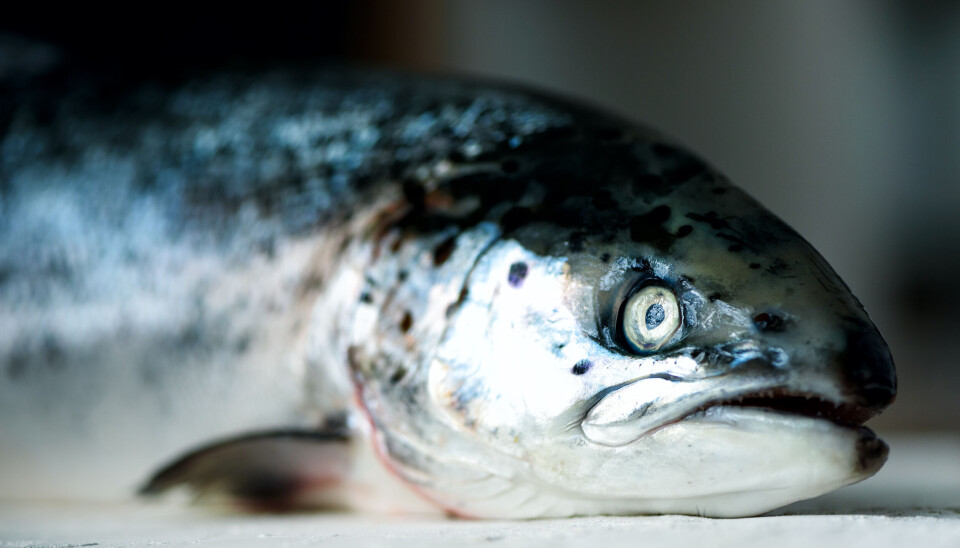THIS ARTICLE/PRESS RELEASE IS PAID FOR AND PRESENTED BY Nofima The Norwegian Institute of Food, Fisheries and Aquaculture Research - read more

Farmed salmon most likely get dark spots from rib fractures
Dark melanin spots in the filet is the most common quality problem in farmed salmon. The answer to what causes this may lie closer to the spots themselves than previously thought. More specifically, in the ribs.
Rib fractures appear to be a major cause of melanin spots. This is a breakthrough for research on melanin spots, and a result of research at Nofima and the PhD work of Raúl Jiménez-Guerrero at the Norwegian University of Life Science (NMBU).
“We have substantiated that there is a connection between rib defects and dark spots,” Nofima senior scientist Grete Bæverfjord says.
The seafood industry is eager to find the cause of the spots because fillets with dark spots are downgraded and achieve lower prices. Dark melanin spots in fillets are the most common quality problem in farmed salmon. Most spots are found in the fillet near the head and abdomen.
Turid Mørkøre is a senior scientist at Nofima and a professor at NMBU, with extensive research experience on dark spots.
“We have investigated many possible causes and now know that neither feed nor genetics are the main causes of dark spots in salmon fillets,” Mørkøre says.

Wanted to investigate ribs
Mørkøre and Bæverfjord wanted to investigate whether rib fractures could have anything to do with the problem. At Sunndalsøra, Nofima has equipment that can be used to examine the skeleton of fish, and Bæverfjord has extensive experience in diagnosing deformities using X-rays. However, very little research has been conducted on ribs. Therefore, the work also involved classifying normal ribs and different types of injuries.
The scientists followed a group of fish from the freshwater phase to slaughter, and the results were compared with wild fish. Bæverfjord was surprised by how many rib defects the salmon had, both with and without fractures. The fractures were mainly located in the same place in the fillet as the dark spots.
In both freshwater smolt and wild salmon, there was an average of four rib defects per fish. After transfer to sea, the number had increased to 10 defects per fish. The increase occurred during the final freshwater period and the first months at sea, and remained stable until slaughter.
The scientists believe that we need to focus on what the fish are exposed to during this period, with a view to improving technology and routines so that the problem of dark spots can be prevented.
Rib fractures don’t explain everything
“We find both melanin spots without rib injuries and rib defects without dark spots, so that doesn’t explain everything. We suspect, for example, that some melanin spots may be caused by muscle tears,” Bæverfjord says.
The study is funded by the Norwegian Seafood Research Fund (FHF), and the research has been peer-reviewed and published in the Aquaculture journal.
Reference:
Jiménez-Guerrero et al. Rib abnormalities and their association with focal dark spots in Atlantic salmon fillets, Aquaculture, 2022. DOI: 10.1016/j.aquaculture.2022.738697

This article/press release is paid for and presented by Nofima The Norwegian Institute of Food, Fisheries and Aquaculture Research
This content is created by Nofima's communication staff, who use this platform to communicate science and share results from research with the public. Nofima is one of more than 80 owners of ScienceNorway.no. Read more here.
See more content from Nofima:
-
Pumpkins are good for more than just Halloween decorations
-
This is how temperature affects a salmon's health and growth
-
Study: Omega-3 and zinc is a powerful duo for salmon
-
Fish may turn yellow if frozen too fresh
-
Is it better if food is packaged in plastic or paperboard?
-
Researchers make healthy salmon feed from polluting CO₂




































